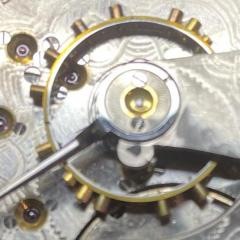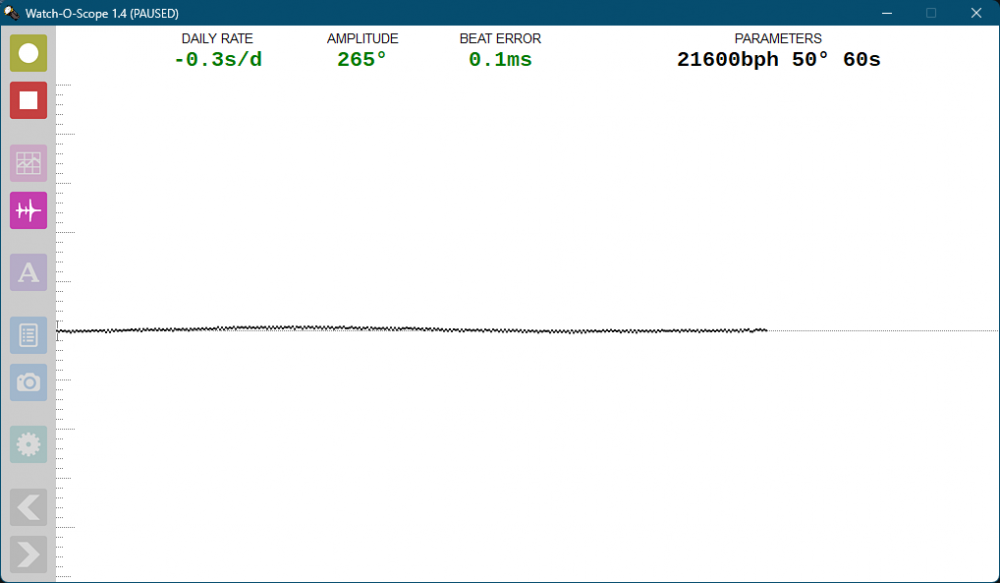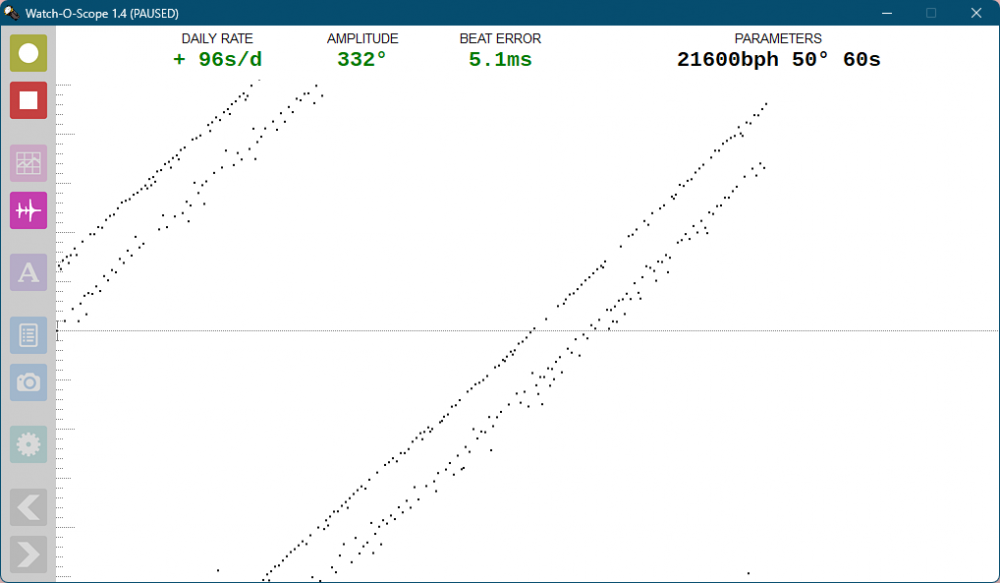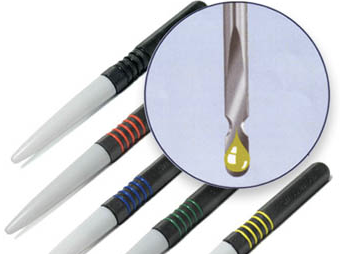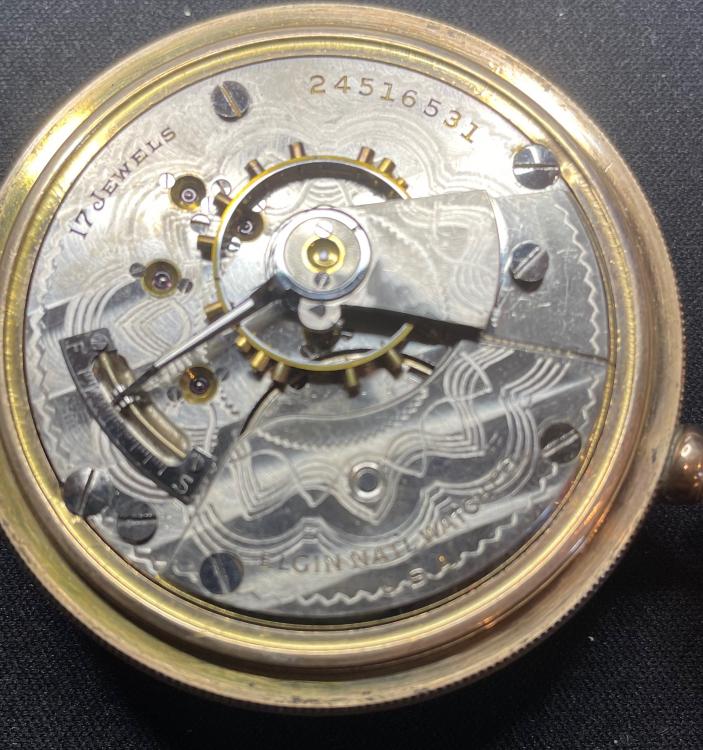Leaderboard
Popular Content
Showing content with the highest reputation on 12/12/22 in all areas
-
4 points
-
I'm pretty sure this question came up a few weeks ago? I use my No 1 tweezers, dip it into the oil container, then transfer it over to the cup - making sure the tips of the tweezers contact that base of the cup - and open them up. Voila - usually enough so I only need to do this once. Obviously you want to pre and post clean your tweezers when doing this using liberal amounts of IPA3 points
-
How out of beat is "way high" ? Up until the 90s pretty much every professional watchmaker used a timing machine that had a paper tape, and printed the dots of the escapement ticks. Lines together, watch in beat, lines apart, watch out of beat, lines pretty close, pretty in beat. Even with the advent of Witschi and Greiner/Vibrograf machines with LCD display that showed amplitude and beat error, most watchmakers stuck with their paper tape machines as those were already expensive and the modern new stuff was REALLY expensive. Beat error was a judgement call, as was amplitude. In the 70s some machines could show amplitude, usually with an accessory unit between the microphone and the timing machine. At least one, the Vibrograf MU700, would show beat error in ms as well as amplitude. Vibrograf stated in the manual anything between 0 and 3ms is acceptable. Nowadays, most modern movements have mobile stud holders, and anyone can get timing technology that only a few professionals might have had even up to the availability of Chinese timing machines a few years ago (the price of new Witschi or Greiner stuff just isn't in the budget for many professionals). So pieces that were timed on paper tape machines, with fixed stud holders, were judged ok if the lines were kind of close. Hairsprings really can't change shape on their own. They may get caught on something, but it would take an enormous shock to possibly cause a change in shape (I even doubt it then). Poor handling during service will certainly change its shape. Restaffing, requiring the removal of the spring, might end up with it out of place. Whether the watchmaker was concerned enough to get it really close was their decision- but now that everyone can read beat error in tenths of milliseconds there is a bit of obsession with getting it really small- just remember, Vibrograf (really, really smart folks who know about timing) say under 3ms is fine. The really high end companies I've worked for do ask for 1ms or less in 6 positions on repairs and restoration work, but they also don't mind paying 130 bucks an hour for as long as it takes to do a full service, haha.2 points
-
I had mentioned elsewhere that Borel is actually a wholesaler, their customers are typically retailers, but they should have asked you for docs for your business. The retailer would be responsible for sales tax. I'm guessing a snafu, they have you as a business probably an assumption based on your purchase of pro equipment. Cheers!1 point
-
I'm not getting real joy from the Hayear 0.5 Barlow lens I bought. Working distance before was 7,1cm. With the Barlow its about 8,5cm, instead of the quoted and expected 16,5cm. By looking at a Barlow lens operation diagram, perhaps the 5mm adapter moved the Barlow lens too far away from the objective lenses? Or perhaps the Hayear is just plainly inferior? I'm on the verge of ordering the original 131Euro lens at 160Euro shipping!!! For my 200Euro Askania uscope..... Lol1 point
-
It certainly did come up Gert, then went down a hare horifice as to the reasons why a syringe shouldn't be used. I kept well out of the discussion .1 point
-
I watched the Sellita Q&A video recently and noticed that gloves were not used in some stages of assembly. I personally dislike finger cots. The cuff is so tight that my fingers end up looking like cocktails sausages after a couple of hours. As a dentist, I used to using gloves all day long, so that's my preference. I also noticed that with experience, it is possible to assemble a watch without leaving behind fingerprints, so it's possible to accomplish certain stages without gloves on. But as a beginner, I would advice wearing gloves and they must be skin tight latex or nitrile rubber types. Not some baggy, flapping in the wind, food handler polythene bag.1 point
-
I don't think finger cots were around in my day's certainly can't recall ever seeing them advertised in any of the leaflets I would get. I used Bergeon Rodico Cleaning Putty if my fingers touched parts.1 point
-
Hi if you are just starting out best to use the finger cots and get used to working with them on, either practising of for real.1 point
-
For fixed stud holder movements, that's my criteria too - about 2ms, for the reasons you mention. When stripping these watches, I fit just the balance/cock to the mainplate and check where the roller jewel sits in the banking pins. I then put a mark on the balance if a slight tweek is needed. If there is no shock protection jeweling on the cock, the balance+hairspring has to be separated anyway, so adjusting the hairspring is easy. Just by line of sight, it's easy to get within about 2ms.1 point
-
1 point
-
1 point
-
What are you using to regulate your watch with? What sort of tool? Not only the watchmaker but for instance the B200 timing machine was the timing machine of choice. I remember When I was in Switzerland if there was a timing machine that's what it was typically. So this brings up the problem of even the factories because they didn't have a newfangled machine with numbers in their face how closely did they regulate the watches too? Is a lot easier to please a timing machine with a paper tape versus a machine with numbers in your face. A problem with any watch that's ever been serviced by anyone else or several other people is things happen and we just end up with all sorts of strange mysteries of watches including Rolex watches that are hopelessly out of time adjustment and all sorts of things where you question what happened maybe somebody had a bad day.1 point
-
Great background, thanks! To your question, these old movements have ranged between 4-6ms after servicing. Most of them have watchmakers marks on the inside of the case, so they’ve been serviced several times over the years. When adjusting, if I can get it below 2ms I’m happy because I’ve decided mucking with it any further only risks damaging the hairspring or collet or both. 50% of the time I can get it below 1ms—then I’m really happy.1 point
-
1 point
-
That's what I did after my Pearl machine stopped working. I've run about 5 watches through it so far and get results as expected. One interesting note is that their customer service says the machine comes with a 2 year warranty but that is not indicated on the website and when asked via email they are unable to provide a copy of the warranty, which I believe runs counter to US federal law Luckily for me the service center they use for repairs is local to me so if I ever do need to have it serviced I won't have to ship it in its HUGE box.1 point
-
OK, you need to determine the end game. Are you training on this watch? Is this an heirloom? Does this belong to your best friend for life? These are important questions for an amateur watchmaker--which I am. If this is a learner watch. Go for all the possible methods and see what work for the next REAL repair. If this is an heirloom. Let the screw remain in place and move on. If this is for your friend (and you are doing this as a favor with no compensation), leave the screw alone. If someone is paying you $1000 to service this watch, well, yeah...first buy a donor, and then get cleaver to see what works--but the end of the day...leave it alone! Don't let perfection be the enemy of the good.1 point



